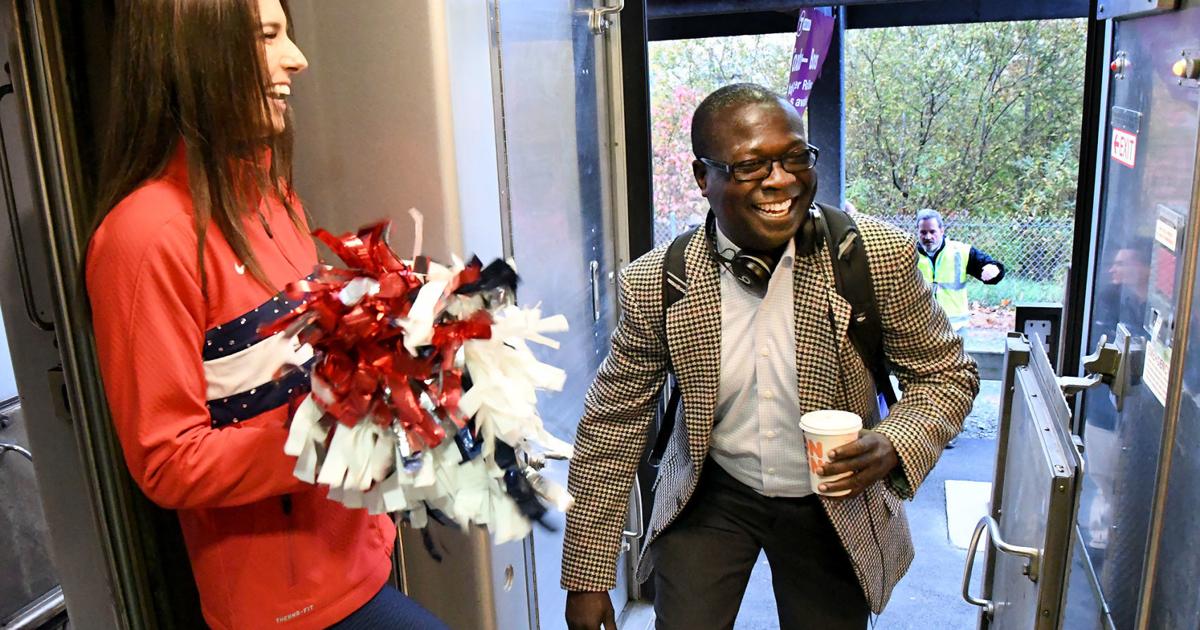The never-released MPO study has all that traffic modeling, so unfortunately the speed figures aren't public.
My guess is speed would be comparable to the current S-curve-a-thon between the Junction and FP, because the ROW geometry is similarly loopy through Bellingham before straightening out on the last 2 miles to Milford.
Bellingham Jct. is a particularly nasty spot with two hard right-angle turns (the midsection between turns is actually a small surviving segment of the Needham/Millis Line where it once bisected the Milford Branch here). Unless they somehow are able to relocate the tracks onto the front lawns of the industrial businesses on Depot St. for about two-thirds of a mile to straighten that mess out you're probably looking at an excruciating crawl in/out of the adjacent Bellingham station on 126. You're probably looking at an 80-minute trip, which is nearing the limits of tolerability for the Purple Line. To work well you might have to let Foxboro handle more of the local stops and do some judicious skip-stopping to make up time. Unfortunately EMU acceleration can't do all that much for crap ROW geometry, so the only electric time-savings are going to get racked up on the mainline and won't be consequential enough to pull Milford in under a buck-fifteen.
It really is a mystery that the MPO never released the study, which was allegedly fully complete. That was the first attempt to put numbers to those catchments, so we have no idea if the demand numbers they did crunch look good or bad (other than they probably wouldn't be hiding the results if those numbers looked good). This is an extension that could swing either way on ridership, on ops (either a service increaser for the layover or an icky proposition of over-long travel times), and on cost (active line with mostly industrial abutters, but wetlands permitting even for in-situ upgrades may run up costs). And end up looking either like an obvious choice or a hard pass depending on how those variables break. But we have no clue how any of those key variables broke. Oh well...as before, the branch ain't going anywhere if we want to take a second look. Grafton & Upton RR takes over the Franklin-Milford freight franchise from CSX next year and sees big growth opportunities at all those industrial parks by 495, so the branch will get some love from the local shortline in the meantime.
RIDOT stated in its most recent 10-year-term State Rail Plan that it wants to do a new Boston-Woonsocket via Franklin study jointly with MassDOT. And they probably should get that done sooner than later because of the whole question over where to relocate Franklin layover, and the service increase considerations therein. That route would probably be a lot faster; NYNH&H used to cover Franklin-Blackstone in 12 minutes with no intermediate stops in between, and had a similar Boston-Franklin schedule in 1955 as today (after correcting for skip-stops, which the New Haven did regularly and the T does rarely). If Forge Park is going to be replaced on the main and Millerville added at about the two-thirds mark as an intermediate stop in lieu of doing anything new at Blackstone, add 3 minutes to the total. Then add another 3+ mins. for the slow 'hook' from Blackstone Jct. to Woonsocket Union Station, which has to traverse a lot of switches while on a banking curve so won't be anyone's idea of a speedway. 75-78 minutes sounds like it's doable...not much different from Milford, but viability may end up in a better place at the higher population terminus fed by more bus routes at the extension stops and the layover cost-sharing with RIDOT intrastate. Hopefully by then we have both studies to compare/contrast.

